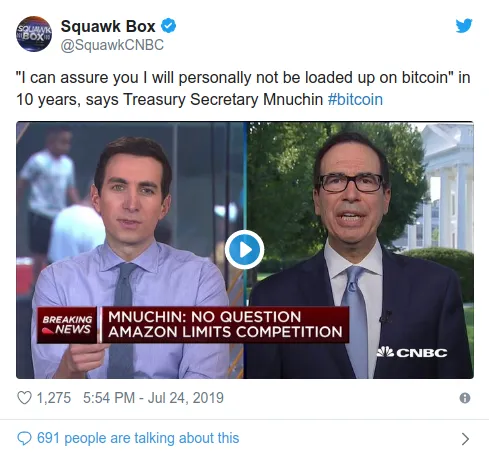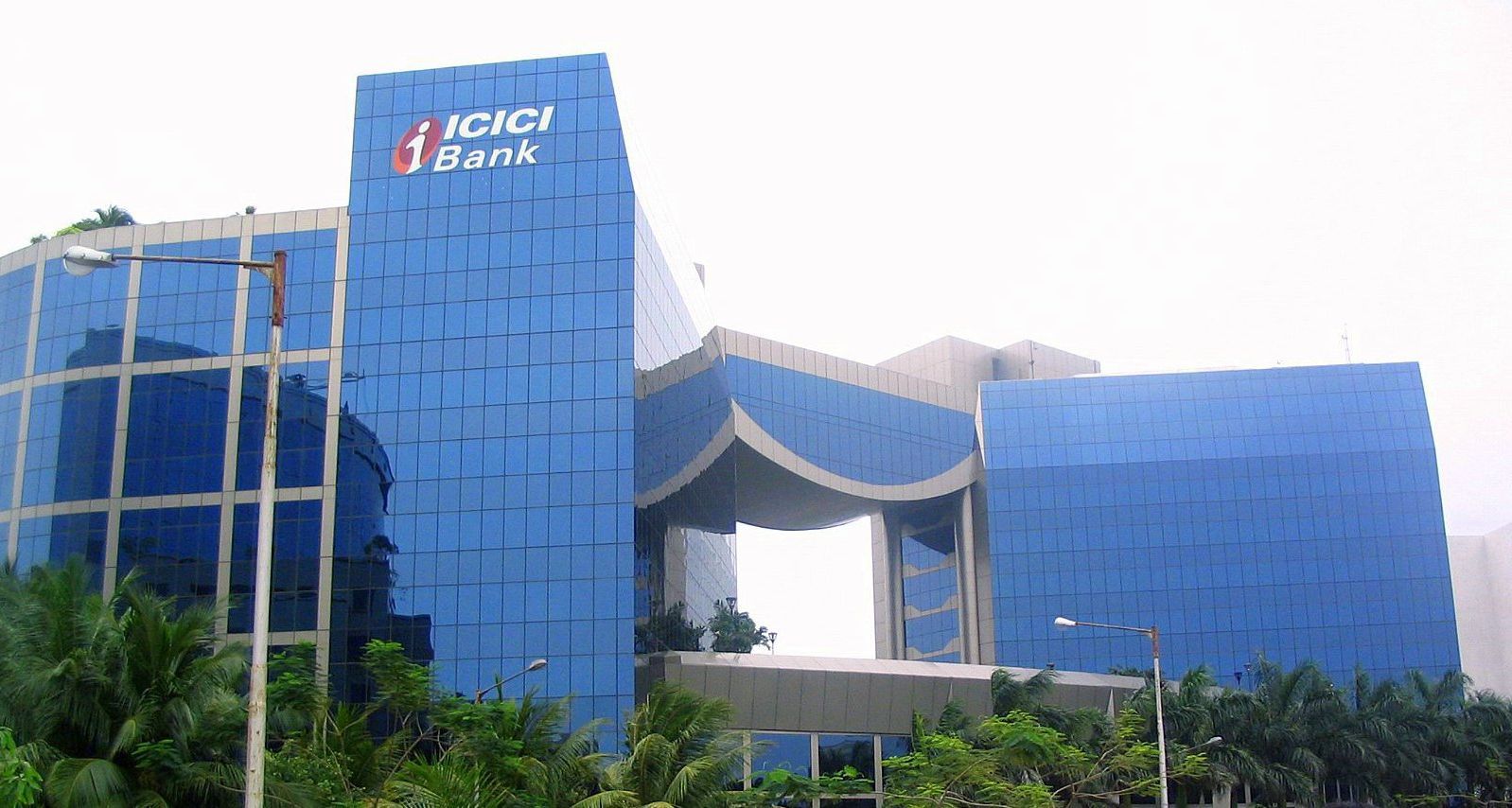In a recent interview on CNBC, U.S. Treasury Secretary Steven Mnuchin claimed cryptocurrency’s future is bleak.
“I can assure you I will personally not be loaded up on bitcoin in 10 years,” Mnuchin said on CNBC’s Squawk Box. “I would bet even in five to six years I won’t even be talking about bitcoin as Treasury Secretary.”
The comment came after multiple house committee hearings on Facebook’s Libra currency were held. CEO of Calibra, David Marcus, testified before a hostile committee hearing recently.

The secretary spoke of the need for regulations for cryptocurrencies so that it may be held to the highest standards. He also invoked the need for Financial Crimes Enforcement Network (FinCEN) and the Financial Action Task Force (FATF) to help fight the misuse of crypto currencies for illegal activities.
“We’re going to make sure we have a unified approach and my guess is that there are going to be more regulations that come out from all these agencies.”
Mnuchin further spoke about the dangers that crypto currencies pose towards disruption of the local economy. However, he failed to explain how this process would take place.
Coindesk reports that on July 18, Mnuchin wrongly claimed that fiat currencies are not vehicles for money laundering, while “there are billions of dollars of transactions going on in bitcoin and other crypto currencies for illicit purposes.” This has been disproved in the recent report that claimed that international banks have laundered over $2 Billion this year.
The anchor of the show was surprised by the US Treasury Secretary Steven Mnuchin’s false claim on national television. He clarified that that claim was not true. Many news outlets took up the story and backed up Squawk Box anchor Joe Kernan. Tom Robinson, CEO of research firm Elliptic, wrote an OpEd for VentureBeat claiming, “Less than 0.5 percent of bitcoin transactions are used for illicit purchases.”
New York Times using Blockchain to fight Fake news
In other news, blockchain may be going mainstream with the New York Times using it to fight fake news. The company hopes to use blockchain to keep a clear and public record of all media. The blockchain will work by implementing a metadata aspect of the image to store all information in a public ledger for easy verification. As blockchain cannot be tampered with, the New York Times hopes that the information will remain true to source. The Company has revealed new details relating to its ongoing blockchain publishing experiments first revealed by CoinDesk in March.
Published Tuesday, a new website for the publisher’s News Provenance Project explains how the storied newspaper’s Research and Development team plans to use Hyperledger Fabric’s permissioned blockchain to authenticate news photographs in partnership with IBM Garage, the tech giant’s accelerator program.
The project aims to combat misinformation and adulterated media, which it argues harms small and large publishers alike. “News consumers [who] are deceived and confused…eventually become fatigued and apathetic to news,” the website says.
The New York Times and partner companies will run a proof-of-concept from July until late 2019 to find a way to maintain trust in digital files. The project aims to store a news item’s “contextual metadata” on a blockchain, including when and where a photo or video was shot, who took it and information regarding how it was edited and published.
The idea is to create a “set of signals that can travel with published media anywhere that material is displayed,” the website says, including on social media, in group chats and in search results.
The Times plans to publish updates on the project throughout the process, culminating in a full report following the pilot’s conclusion.
CoinDesk reported in March that the Times was getting ready to experiment with blockchain technology when the company posted – then quickly removed – a want ad for a project leader.


